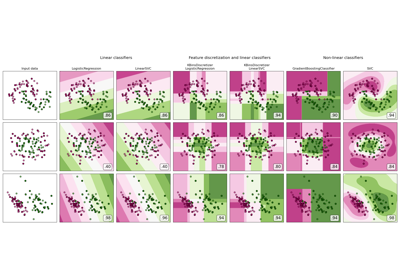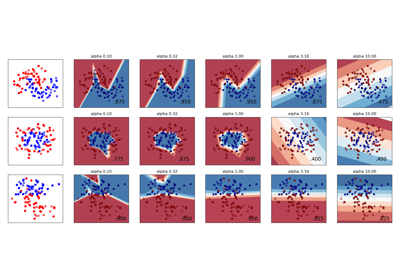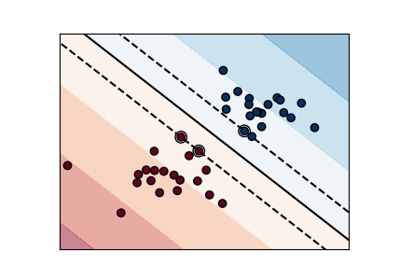Note
Go to the end to download the full example code. or to run this example in your browser via JupyterLite or Binder
Demonstrating the different strategies of KBinsDiscretizer#
This example presents the different strategies implemented in KBinsDiscretizer:
‘uniform’: The discretization is uniform in each feature, which means that the bin widths are constant in each dimension.
quantile’: The discretization is done on the quantiled values, which means that each bin has approximately the same number of samples.
‘kmeans’: The discretization is based on the centroids of a KMeans clustering procedure.
The plot shows the regions where the discretized encoding is constant.
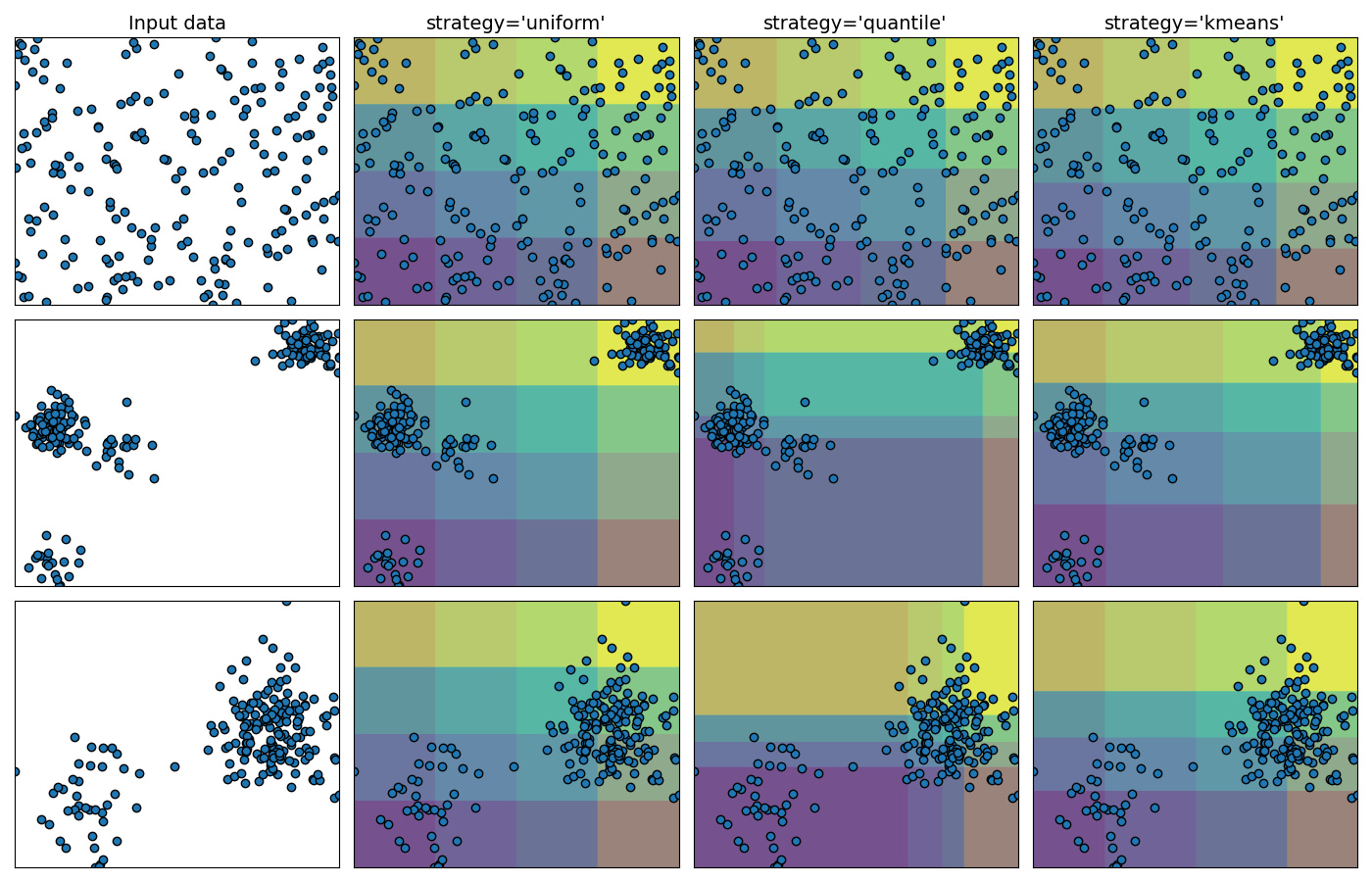
# Authors: The scikit-learn developers
# SPDX-License-Identifier: BSD-3-Clause
import matplotlib.pyplot as plt
import numpy as np
from sklearn.datasets import make_blobs
from sklearn.preprocessing import KBinsDiscretizer
strategies = ["uniform", "quantile", "kmeans"]
n_samples = 200
centers_0 = np.array([[0, 0], [0, 5], [2, 4], [8, 8]])
centers_1 = np.array([[0, 0], [3, 1]])
# construct the datasets
random_state = 42
X_list = [
np.random.RandomState(random_state).uniform(-3, 3, size=(n_samples, 2)),
make_blobs(
n_samples=[
n_samples // 10,
n_samples * 4 // 10,
n_samples // 10,
n_samples * 4 // 10,
],
cluster_std=0.5,
centers=centers_0,
random_state=random_state,
)[0],
make_blobs(
n_samples=[n_samples // 5, n_samples * 4 // 5],
cluster_std=0.5,
centers=centers_1,
random_state=random_state,
)[0],
]
figure = plt.figure(figsize=(14, 9))
i = 1
for ds_cnt, X in enumerate(X_list):
ax = plt.subplot(len(X_list), len(strategies) + 1, i)
ax.scatter(X[:, 0], X[:, 1], edgecolors="k")
if ds_cnt == 0:
ax.set_title("Input data", size=14)
xx, yy = np.meshgrid(
np.linspace(X[:, 0].min(), X[:, 0].max(), 300),
np.linspace(X[:, 1].min(), X[:, 1].max(), 300),
)
grid = np.c_[xx.ravel(), yy.ravel()]
ax.set_xlim(xx.min(), xx.max())
ax.set_ylim(yy.min(), yy.max())
ax.set_xticks(())
ax.set_yticks(())
i += 1
# transform the dataset with KBinsDiscretizer
for strategy in strategies:
enc = KBinsDiscretizer(n_bins=4, encode="ordinal", strategy=strategy)
enc.fit(X)
grid_encoded = enc.transform(grid)
ax = plt.subplot(len(X_list), len(strategies) + 1, i)
# horizontal stripes
horizontal = grid_encoded[:, 0].reshape(xx.shape)
ax.contourf(xx, yy, horizontal, alpha=0.5)
# vertical stripes
vertical = grid_encoded[:, 1].reshape(xx.shape)
ax.contourf(xx, yy, vertical, alpha=0.5)
ax.scatter(X[:, 0], X[:, 1], edgecolors="k")
ax.set_xlim(xx.min(), xx.max())
ax.set_ylim(yy.min(), yy.max())
ax.set_xticks(())
ax.set_yticks(())
if ds_cnt == 0:
ax.set_title("strategy='%s'" % (strategy,), size=14)
i += 1
plt.tight_layout()
plt.show()
Total running time of the script: (0 minutes 0.710 seconds)
Related examples
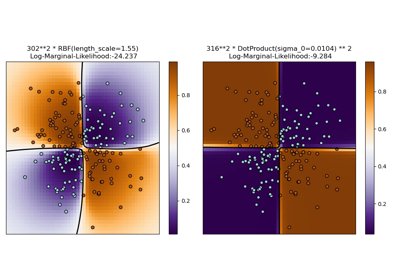
Illustration of Gaussian process classification (GPC) on the XOR dataset

